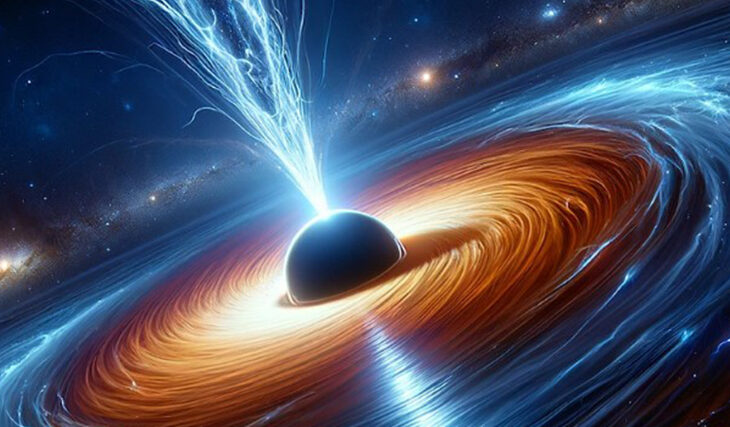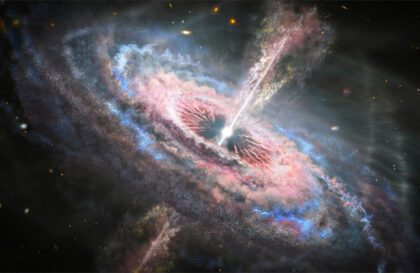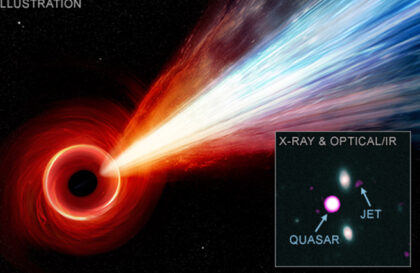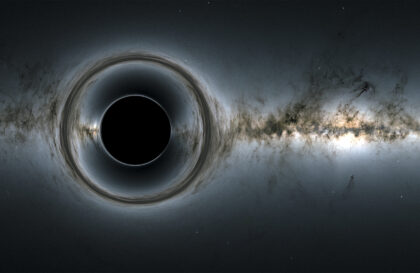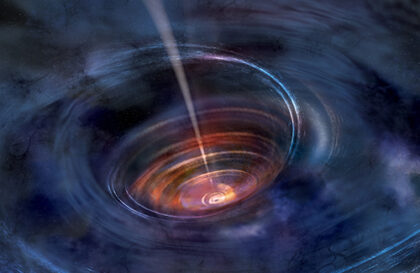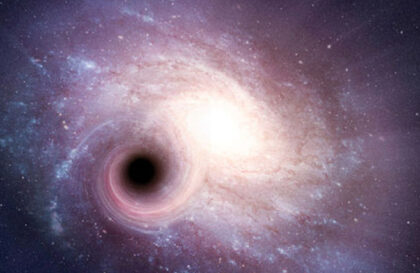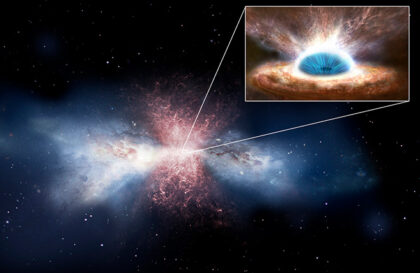The gas giant Jupiter often experiences thunderstorms, flashing with lightning that can be seen from orbit. They are several times more potent than earthly ones. But both ours and Jovian’s thunderstorms are nothing compared to the monstrous storm raging in the heart of the 3C303 galaxy.
At its center is a supermassive black hole. The powerful magnetic fields it creates produce an incredible electric current – 1018 amperes. This is a trillion earthly lightning bolts released simultaneously. The most powerful lightning on Earth has a force of up to 500 thousand amperes. This is the most substantial current ever observed in the Universe.
One hour of operation of such a generator could easily power the entire Earth for six months. And the generator does not have to be located near the Earth. The generated electric arc travels 150 light years before it dries up.
The radio core is the bright peak at the center of the source. A knotty jet feeds a very bright double hotspot embedded in the western lobe while a very faint hotspot projects to the east. Credit: Leahy & Perley (1991)
But!
The black hole constantly shoots jets of material away from its galaxy, and its colossal jet reaches a length of 150,000 light years – more significant than the estimated diameter of our Milky Way.
Therefore, it is good that this thing is located two billion light-years from Earth, and the “rays of goodness” it sends are not aimed at us.
Banner image: The gas giant Jupiter often experiences thunderstorms, flashing with lightning that can be seen from orbit. They are several times more potent than earthly ones. But both ours and Jovian’s thunderstorms are nothing compared to the monstrous storm raging in the heart of the 3C303 galaxy.
Image credit:
https://drive.google.com
https://www.jb.man.ac.uk
